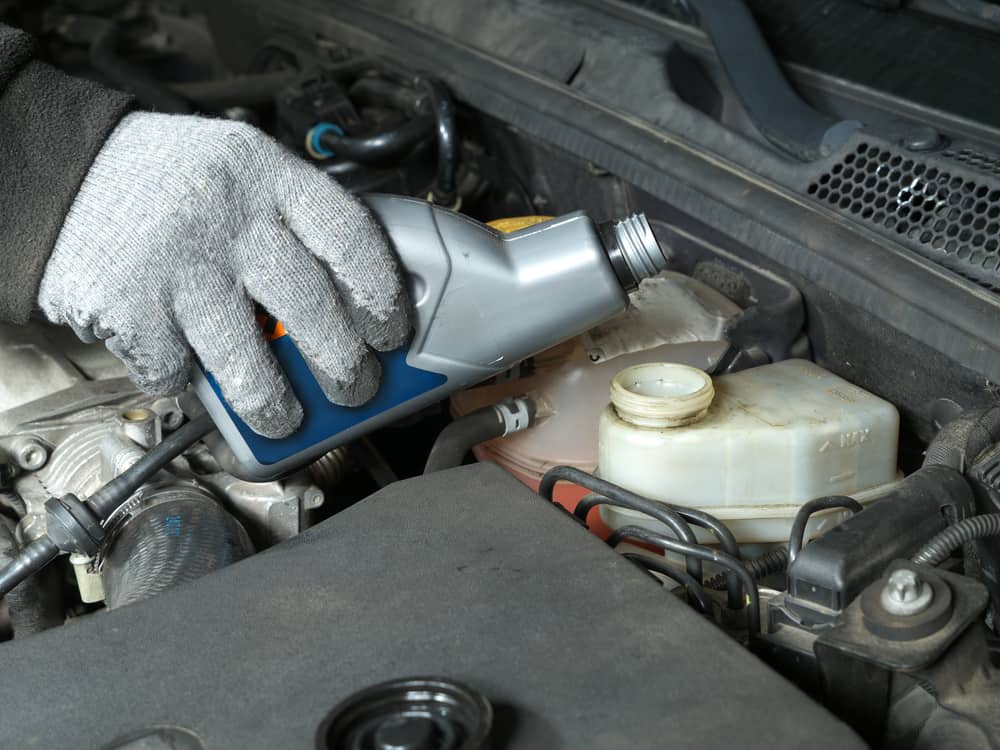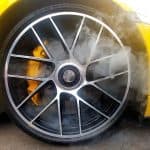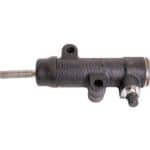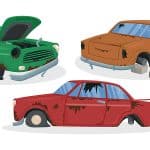
Brake fluid plays a vital role in your car. This liquid transfers the force of the driver’s foot on the brake pedal through to the disc brakes. It uses a system of tubes and pressure, a little like those that you might find on a hydraulic piston, to operate all the brakes simultaneously. It is imperative that you have the right level of brake fluid in your car. If you do not have enough fluid then this may mean that you cannot reach the required levels of pressure in your system to safely operate your car’s brakes.
Table of contents:
- Why does Brake Fluid require topping up?
- How to Check your Brake Fluid
- Checking the Condition of the Fluid
- What are the Different Kinds of Brake Fluid?
- Topping up the Fluid
Why does Brake Fluid require topping up?
One of the main reasons why you need to constantly change and check your brake fluid is the heat generated by your car’s braking system. When the callipers are applied to the disc brakes on each wheel this generates a large amount of energy, which dissipates in the form of thermal energy. Brake fluid is generally supplied with a less than 5% water composition, which prevents the liquid from boiling and evaporating from the heat of the brakes. However thanks to the hygroscopic nature of this fluid, which is to say that it can collect water from the pipes and hoses of the braking system, this composition can become diluted. This in turn lowers the boiling point of the liquid and over time the fluid starts to evaporate on contact with the heat from the brakes.
How to Check your Brake Fluid
There is a very simple and easy process to checking your car’s brake fluid. This can be broken down into a number of steps as follows:
Level your car
The first step is to ensure that your car is parked on a flat and level surface so that the brake fluid in the reservoir will also be level. Also make sure that the engine is off and has fully cooled.
Locate the Reservoir
Open the front bonnet and find the brake fluid reservoir. This is normally located on the driver’s side of the engine. It looks like a small cylindrical fluid holding device.
Check the levels
On most cars there are two levels, min and max that indicate the correct and safe levels of brake fluid within the engine. These are usually situated on the external side of the reservoir. You should be able to simply observe the level of the fluid through the clear plastic of the reservoir and assess whether or not the fluid needs topping up.
Checking the Condition of the Fluid
In older cars it may be the case that the condition of the brake fluid has fully deteriorated. Normal brake fluid should have a dull or rusty brown colour with a degree of clarity. If the fluid has taken on a very dark or even black colour then this could indicate that your fluid is contaminated by excess water, which as we stated above can affect its performance and it could need changing out. This is a job that is best performed by a fully trained mechanic at a garage.
What are the Different Kinds of Brake Fluid?
Always be sure to use the right kind of brake fluid for your car. There are three different types available, known as DOT3, DOT4 and DOT5. The first two, DOT3 and DOT4 are glycol based fluids that can absorb water, whilst DOT5 is a silicon based solution that will not absorb water. This means that each kind of fluid has its own unique boiling point. It is therefore vital that you use the required type that works with the heat generated by your brakes. Do not mix fluids as this will change the boiling point.
Topping up the Fluid
It is an incredibly simply job to top up your car’s brake fluid. The important thing is ensuring that you have the right fluid, which can be checked in your owner’s manual. Unscrew the top of the reservoir and fill it up with the fluid to a level below the maximum line and above the minimum. Take care not to spill any fluid as this can be corrosive and damage your engine, and if you do accidentally spill a few drops be sure to wipe them away with a rag.







.png)